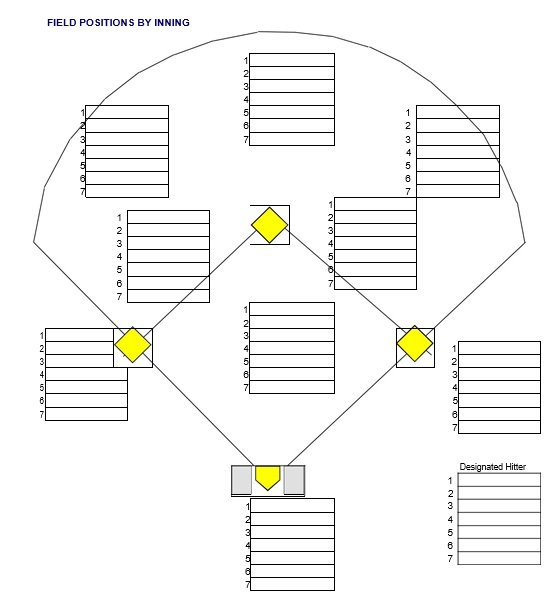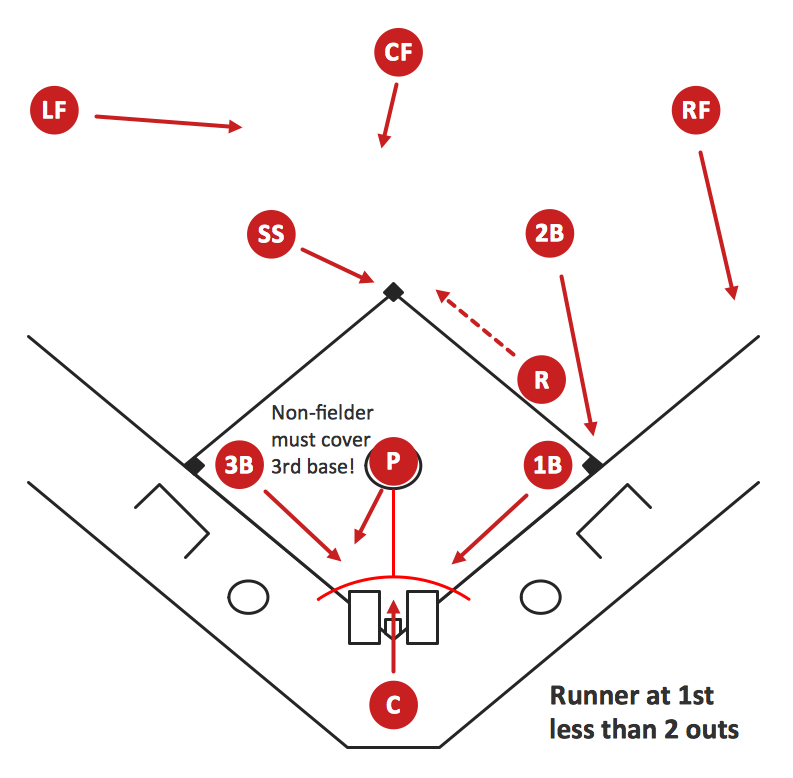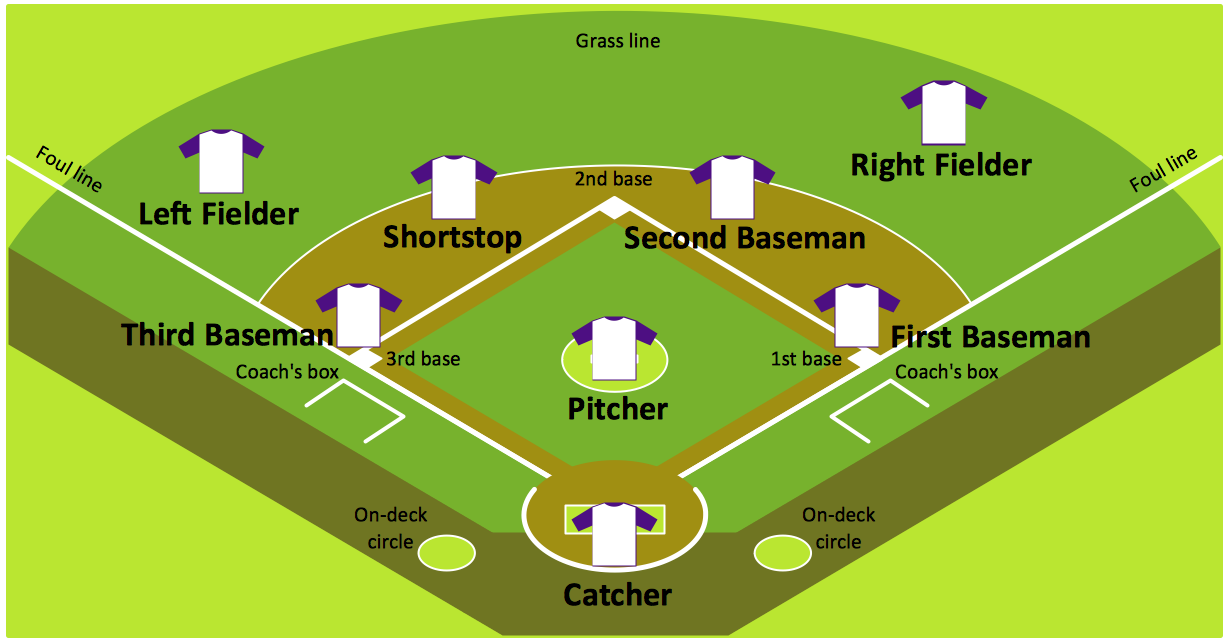Baseball is known as “America’s favorite pastime” and has been a beloved sport for many years. Whether you’re a player, a coach, or just a fan, understanding the different positions on the baseball field is essential. In this article, we will explore a printable baseball position chart that can help you keep track of the various positions and their roles.
Printable Baseball Position Chart
 The printable baseball position chart is a valuable resource for players, coaches, and even parents. It showcases the different positions on the field and provides a visual representation of where each player should be positioned during a game. This chart can be printed and used as a reference guide for both practice sessions and actual games.
The printable baseball position chart is a valuable resource for players, coaches, and even parents. It showcases the different positions on the field and provides a visual representation of where each player should be positioned during a game. This chart can be printed and used as a reference guide for both practice sessions and actual games.
Understanding Baseball Field Positions
 Each position on the baseball field has its own specific responsibilities and roles. Understanding these positions is crucial for players to excel in their positions and for coaches to make tactical decisions. Let’s take a closer look at some of the key positions on the field:
Each position on the baseball field has its own specific responsibilities and roles. Understanding these positions is crucial for players to excel in their positions and for coaches to make tactical decisions. Let’s take a closer look at some of the key positions on the field:
- Pitcher: The pitcher is responsible for throwing the ball to the batter with the goal of getting them out. They play a crucial role in the game and must have excellent control, speed, and accuracy in their throws.
- Catcher: The catcher crouches behind home plate and receives the pitches thrown by the pitcher. They must have excellent reflexes and be skilled at catching the ball, as well as being able to make quick and accurate throws to other bases to catch runners off guard.
- Infielders (First baseman, Second baseman, Shortstop, Third baseman): The infielders are positioned close to the bases and are responsible for fielding ground balls and making throws to get runners out. The shortstop is often considered the most versatile infielder and plays a key role in turning double plays.
- Outfielders (Left fielder, Center fielder, Right fielder): The outfielders are positioned in the outfield and are responsible for catching fly balls and making throws to prevent runners from advancing. They often have to cover a large area and must have good speed and agility to reach and catch the ball.
Defensive Position Number Chart
 Another useful resource for understanding the positions on a baseball field is the defensive position number chart. This chart assigns a number to each position, making it easier to communicate with teammates and coaches during a game. For example, the number 1 is typically assigned to the pitcher, the number 2 to the catcher, and so on. Having a common understanding of these numbers can help teams communicate and coordinate their defensive strategies effectively.
Another useful resource for understanding the positions on a baseball field is the defensive position number chart. This chart assigns a number to each position, making it easier to communicate with teammates and coaches during a game. For example, the number 1 is typically assigned to the pitcher, the number 2 to the catcher, and so on. Having a common understanding of these numbers can help teams communicate and coordinate their defensive strategies effectively.
Importance of Understanding Field Positions
 Understanding the different field positions in baseball is essential for players, coaches, and even fans. It allows players to know their specific roles and responsibilities on the field, ensuring that they are in the right place at the right time. Coaches can make strategic decisions based on the positions of their players and the situation on the field. Fans can also appreciate the game better by understanding how each position contributes to the overall dynamics of the game.
Understanding the different field positions in baseball is essential for players, coaches, and even fans. It allows players to know their specific roles and responsibilities on the field, ensuring that they are in the right place at the right time. Coaches can make strategic decisions based on the positions of their players and the situation on the field. Fans can also appreciate the game better by understanding how each position contributes to the overall dynamics of the game.
Conclusion
 The printable baseball position chart and defensive position number chart are valuable tools for anyone involved in the game of baseball. These resources provide a visual representation and numerical assignment of the different positions on the field, making it easier to understand and communicate during games and practices. Whether you’re a player, coach, or fan, having a good understanding of the various positions in baseball enhances your enjoyment and knowledge of the game. So, print out these charts and dive into the exciting world of baseball!
The printable baseball position chart and defensive position number chart are valuable tools for anyone involved in the game of baseball. These resources provide a visual representation and numerical assignment of the different positions on the field, making it easier to understand and communicate during games and practices. Whether you’re a player, coach, or fan, having a good understanding of the various positions in baseball enhances your enjoyment and knowledge of the game. So, print out these charts and dive into the exciting world of baseball!